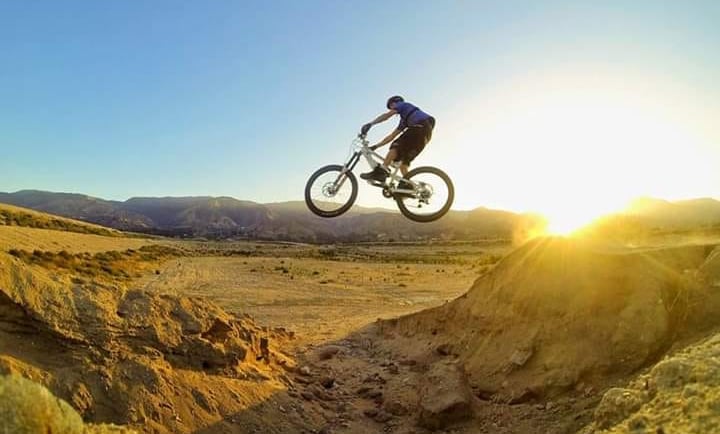Mountain bike jumping terminology
Learn all the terminology and slang for mountain bike jumping
SKILLS
2/12/20253 min read


MTB Jumping Terminology: A Guide for Riders
Jumping is one of the most thrilling aspects of mountain biking. Whether you’re just starting or looking to refine your skills, understanding the language of MTB jumping is crucial. In this guide, I will break down essential terminology to help you communicate with other riders and improve your technique.
Basic Jumping Terms
1. Takeoff – The section of a jump where you launch into the air.
2. Lip – The very top edge of a takeoff, which determines how much pop or lift you get.
3. Air Time – The amount of time you spend in the air before landing.
4. Landing – The part of the jump where you touch down; usually shaped to help you land smoothly.
5. Transition (Tranny) – A curved section that helps maintain momentum before or after a jump.
6. Run-Up (Approach) – The section of trail leading up to a jump, where you generate speed and prepare for takeoff.
7. Case – Landing short and hitting the edge of the landing rather than the transition, which can be jarring.
8. Overshoot – Landing too far past the intended transition, often causing a rough impact.
9. Dead Sailor – A jump where the rider loses control in the air, often resulting in a sketchy landing.
Jump Types
1. Tabletop – A jump with a flat top, making it safer for beginners since you can land anywhere on the top surface.
2. Double (Gap Jump) – A jump with a gap between the takeoff and landing; requires commitment as there’s no safety net in between.
3. Step-Up – A jump where the landing is higher than the takeoff, helping maintain speed and reducing hard impacts.
4. Step-Down – A jump where the landing is lower than the takeoff, requiring good speed control.
5. Hip Jump – A jump where the landing is offset at an angle from the takeoff, requiring a turn in mid-air.
6. Drop – A feature where the takeoff has no direct transition to the landing, requiring good bike control.
7. Boner Log – A long, straight log or plank used as a takeoff for extra pop and style.
Jumping Techniques
1. Bunny Hop – Lifting both wheels off the ground to clear an obstacle or add style to a jump.
2. Boost – Pushing into the takeoff to get extra height.
3. Pop – The amount of lift generated off the lip of a jump.
4. Preload – Compressing the bike and your body before takeoff to maximize lift.
5. Scrub – A technique used to stay low over a jump by angling the bike sideways.
6. Whip – Throwing the back end of the bike sideways in the air, then bringing it back before landing.
7. Tweak – Exaggerating a movement mid-air for extra style (e.g., tweaking a whip).
8. Pump – Using your body movements to generate speed without pedaling, often useful on jump trails.
9. Brake Check – Lightly tapping the brakes before a jump to control speed.
Trick Names
1. ET – Pedaling in mid-air while jumping (named after the famous E.T. movie scene).
2. No Footer – Taking both feet off the pedals mid-air.
3. X-Up – Turning the handlebars 180 degrees in the air.
4. One-Hander – Taking one hand off the bars while jumping.
5. One-Footer – Removing one foot from the pedals mid-air.
6. Tabletop (Trick) – Tilting the bike sideways in mid-air, making the bike horizontal.
7. Can-Can – Kicking one foot over the top tube while jumping.
8. Tuck No-Hander – Tucking the bike up and removing both hands from the bars.
9. Suicide No-Hander – Extending both arms straight back while jumping, with no hand contact on the bars.
10. Barspin – Spinning the handlebars 360 degrees while in the air.
Final Thoughts
Understanding MTB jumping terminology will not only improve your communication with other riders but also help you refine your skills. Whether you're sending your first tabletop or throwing down stylish whips, knowing the right terms will boost your confidence and riding ability.
Did we miss any terms? Let us know in the comments and keep sending it! 🚀
